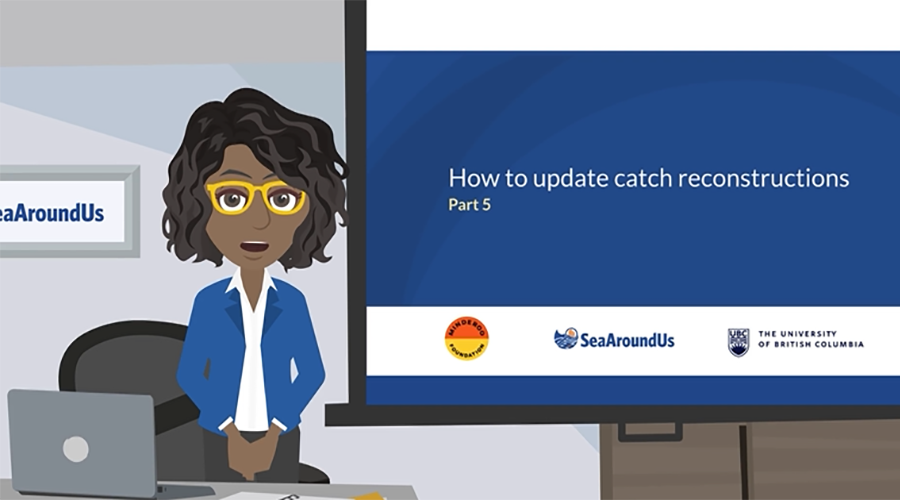Sea Around Us data users interested in learning how to perform a catch reconstruction update now have access to a suite of free video tutorials.
The step-by-step guides, available in English with carefully curated subtitles in Arabic, Chinese, French, Indonesian, Italian, Spanish and Turkish, (with more languages on the way), are presented in an easy-to-understand animated video format led by a researcher named Ola.
This five-part course starts with the theoretical principles that serve as a foundation for the catch reconstruction methodology and moves into a practical guide that, using the case of a fictional country called Olaland, covers each phase of the process—from reviewing previous reconstructions and comparing datasets, to identifying missing data, estimating unreported catches from unconventional sources, detecting errors, and harmonizing datasets.
The goal with these tutorials is to allow as many people as possible to learn the catch reconstruction methodology at their own pace, thus democratizing access to this knowledge and, therefore, supporting efforts aimed at having better catch data and getting a clearer picture of how much fish humanity is taking out of the global ocean. Expanding the application of the catch reconstruction methodology, therefore, also has the potential to back the work carried out by governments, NGOs, intergovernmental organizations, and universities to sustainably manage fish populations.
As the Sea Around Us team approaches the final stages of the latest reconstruction update of its global catch data, a work that has involved dozens of research assistants, one-hundred in-country collaborators and countless hours of training, project manager, Dr. Maria ‘Deng’ Palomares, highlighted the value of these tutorial videos for future work.
“This is part of our legacy,” Dr. Palomares said. “Giving people the tools to reconstruct the catch of their own countries on their own time has the potential to increase the availability of data crucial to address ocean protection- and food-security-related questions.”
The videos have been uploaded onto the YouTube video player, one of the lightest available online, so that users with different ranges of bandwidth can have easy access and watch them at their own pace, even pausing and reviewing sections as needed.
Users can also access another suite of free video tutorials aimed at learning how to perform stock assessments using the CMSY methodology.
Follow-up questions can be sent to feedback(at)seaaroundus.org.
The video tutorials “How to update catch reconstructions” have been prepared thanks to the support of the Minderoo Foundation and in collaboration with UBC Studios.


